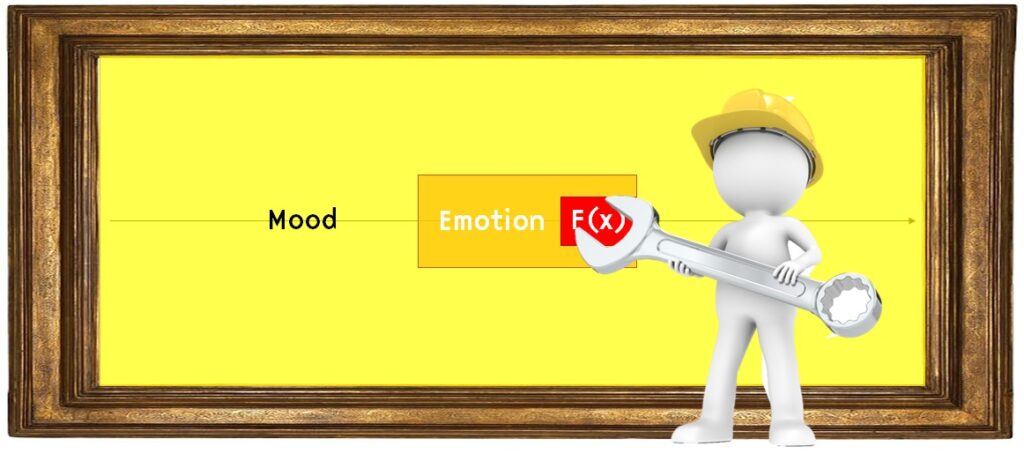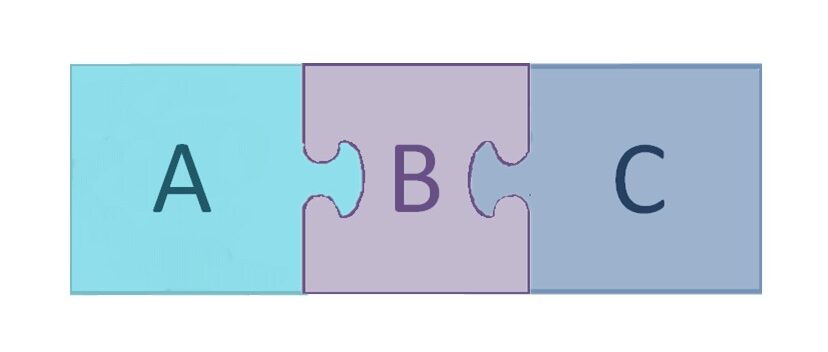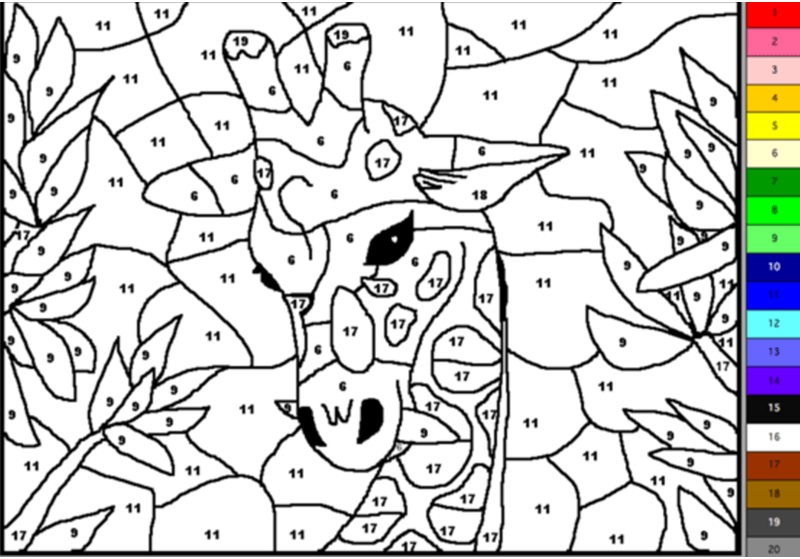Updated November 2022.
During the pandemic, I was crazy busy preparing a novel course, called Resolving Challenging Behaviour, all about, you guessed it, resolving challenging behaviour in animals.
I’ve had a bunch of brave and enthusiastic pilot students help me develop the course, and one course chapter that they found specifically useful was the one on Antecedent Strategies.
So I thought I’d share it.
But, before I do that, I need to give you some back story.
Behaviour occurs in context
Unwanted behaviour doesn’t appear out of the blue – it occurs in specific contexts.
Perhaps a specific location, or in the presence of specific animals, people or other stimuli.
And in this context, the animal has an emotional reaction. And, because of that emotional reaction, he performs a behaviour.

The behaviour serves some type of purpose, it has function. The function may be to escape the situation, or to get access to some resource, for instance. The behaviour has some type of consequence that’s relevant to the animal.
Typically, as the animal performs the behaviour, his emotional state shifts. If he escaped an annoying situation, he may feel relief. If he managed to get a cookie, he might feel happy/excited.
And when it comes to behaviour that is problematic to us humans, what we might call “challenging behaviour”, those behaviours are often the animal’s attempt to resolve what’s to him a challenging context.
In other words, the unwanted behaviour might be the animal’s solution to his problem. He’s doing it to get away from the scary situation, or he figured out that there’s chicken on the kitchen counter.
So how do we resolve these types of situations?
How do we get rid of unwanted behaviour? How do we solve our problem, without messing with the animal’s solution to his problem?
In short, to get rid of unwanted behaviour we can a) change his overall mood, we can b) change his emotional reaction to the challenging context, or we can c) change something about the function that’s currently maintaining the unwanted behaviour.
Yes, that was very short, and these three strategies are essentially what I teach in the Resolving Challenging Behaviour course: 25 hours, 140+ videos.
What I’m sharing in this post is one small part of the function category.
The Behaviour Function
To understand the function of behaviour in a specific context, we must look at the ABCs.
The ABCs explain the current function that maintains the behaviour in that situation.
The why of the behaviour, if you will.

Consequences are about what happens after the behaviour, what the animal gets from doing the behaviour – or what he gets away from.
Antecedents are about the context where the behaviour occurs. Where does it occur? When? Which stimuli are present? What does the environment look like? What happens just before the behaviour?
Antecedents are all about things that happen or are in place before a specific behaviour occurs. Events or stimuli that signal that a particular behaviour is likely to be reinforced or punished, or that make that reinforcer more or less valued.
Normally, we don’t make distinctions between the animal, the trainer and the environment when talking about antecedents. Rather, we categorize them differently.
Three types of antecedents
Antecedents come in three kinds.

Setting Events. This is about changes in the environment, or the animal, that affect the probability of behaviour. It’s about context, conditions and situational influences.
Setting events are about how the environment is organized, physically. Without those outlines in the image above, the behaviour of drawing a giraffe would be at the mercy of my drawing skills. But since they’re there, they’re informing my behaviour, helping me draw a giraffe by giving clear boundaries.
The physical space where we’re at impacts behaviour, and challenging behaviour can be more or less probable depending on how the environment is organized.
For instance, setting events may be about whether there are visual barriers or not in the presence of distractions.
They may be about the presence or absence of objects, people or other animals in the environment where the behaviour occurs.
Setting events could also involve the animal’s bodily state, things like health or hormonal status, that impacts behaviour. For instance, lack of sleep may make an animal more likely to show aggressive behaviour when she hears a loud noise.
- Another type of Antecedent is the Motivating Operation, or MO. This one is about how interested the animal is right now in performing a behaviour and getting the outcomes of that behaviour.
MOs help explain variations in the effects in the consequences of behavior: sometimes the animal works eagerly for access to a resource, other times not.
An MO affects how strongly the individual is reinforced or punished by the consequences of their behavior, so the MO alters the value of the reinforcer momentarily. This helps explain why certain challenging behaviour occur in one context but not in another context. The reinforcer may be there in both contexts, but it’s more valuable in one than in the other.
MOs have a value-altering effect. If you can find a way to alter the value of a reinforcer or a punisher, that’s an MO, a motivating operation. And since MOs alter the value of the consequence, they also alter the probability of the behaviour affected by the consequence: the frequency, latency, magnitude of behaviour.
In short, an MO changes how much you “want” something and how hard you will “work” to get it. Per definition, both of these must occur in order for it to be called an MO. The concept of motivating operation deals with the observation that behavior depends not only on the stimuli present here and now, and the organism’s past experience with those stimuli yesterday and last week, but also on the animal’s recent past history of deprivation, satiation, pain, or other such events, in the last couple of hours or so.
So, the value of a given consequence as a type of reinforcement or punishment is in constant flux, as is the probability of behavior occurring that has previously been associated with those consequences. MOs happen naturally, or can be intentionally arranged by the trainer.
And of course, that value can increase or decrease, and the probability of behaviour can increase or decrease. When trying to understand challenging behaviour, it’s important to identify the MOs that are associated with the challenging behaviour, and the ones that aren’t. For instance, the animal may show the challenging behaviour when he’s hungry, but not when he’s just eaten.
- The third and last type of Antecedent is some type of triggering stimulus, typically referred to as the Discriminative Stimulus, the SD; the cue; the green light that signals to the animal that reinforcers are available if the behaviour occurs.
A verbal “come!” would be the SD telling the animal that if he runs up to the person, he’s going to get a treat. Or the presence of a chicken on the kitchen counter might be the SD that triggers counter surfing behaviour. If you’re having trouble with cues, here’s how to teach ‘em.
Understanding antecedents and arranging them to support the behaviours that we want, and to discourage the behaviours that we don’t want, is part of the savvy animal trainer’s arsenal.
If you’d like to learn more about using antecedents to get desired behaviour, check out my introductory Getting Behaviour course, or perhaps the Advanced Animal Training course.
Below, I’m sharing the video about how to use antecedents to get rid of unwanted behaviour from the Resolving Challenging Behaviour course. This video is from module 7.
One thing I’ve pointed out many times during the course prior to showing this video is that it’s typically not a good idea to allow the animal to rehearse unwanted behaviour. I’ve also talked about the importance of managing the behaviour; trying to prevent it from being rehearsed, something that ties in heavily with Setting Events.
One of my brave pilot students remarked: “It seems to me there’s a gray area between management and antecedent arrangement. Would you say the difference is in whether you are preventing a behavior from occurring (management) or making a behavior more likely (antecedent arrangement)?
I have to confess that when I first learned about antecedent arrangement, I felt a bit as if I was avoiding the problem, not solving it. I encounter clients who feel the same way, as if the problem is only “solved” if they can get the animal to do the behavior they want under the exact same conditions where the unwanted behavior occurred.”
I answered: For me antecedent arrangements are both about facilitating and impeding behaviour, and management is prevention… so closely related. But I don’t work hands-on, I’m sure that the terms are used differently by different people!
I suspect the hesitancy to Antecedent strategies that you mention is very common! It’s not considered a true solution – but it can make an enormous difference in life quality for all involved! 🙂
***
Interested in joining me when the Resolving Challenging Behaviour course opens to the public again? Just sign up below and I’ll keep you posted! I’ll also let you know whenever I publish any other new content that has to do with animal behaviour, learning and wellbeing.
*MHERA (formerly EMRA) is about Mood State, Hedonic Budget, Emotional and Reinforcement Assessment, a tool developed by COAPE (the Centre of Applied Pet Ethology) https://www.capbt.org/emra.php
9 replies on “Using antecedent strategies to resolve challenging behaviour”
Hi Karolina, very interesting presentation. One thing is not clear to me. In the case of the yellow orange MHERA model, what is being measured on the axes?
Michael, time on the X-axis! 🙂
Jeg kan se en markant forskel på min hunds madglæde når hun får maden serveret i henholdsvis i sin skål eller når hun skal søge/arbejde for at få den.
Morgenmaden får hun i en KONG Wobbler, aftensmaden (som er gigant størrelse tørfoder) får hun i et lille børnebassin fyldt med “bolde til boldbassin”
🙂
Hi Karolina
I once had a neighbor who had 3 male Shepherds I myself had a male Bouvier …. every time they spotted each other through the fence they barked violently and sometimes it became a definite fight I solved it by putting cheap tarpaulins up on the fence so that they could not see each other- the problem was solved in a quick, easy and cheap way
Best Regards Iben
Such a great example, Iben! 🙂
I use antecedent strategies extensively in my work with OCD, along with other “whole dog and environment” approaches. Difficult problems require quite a lot of “micromanagement” to build new habits!
Such an important point you’re making, Caitlin – both about the “whole” animal – and the value of building new habits! 🙂
🙂